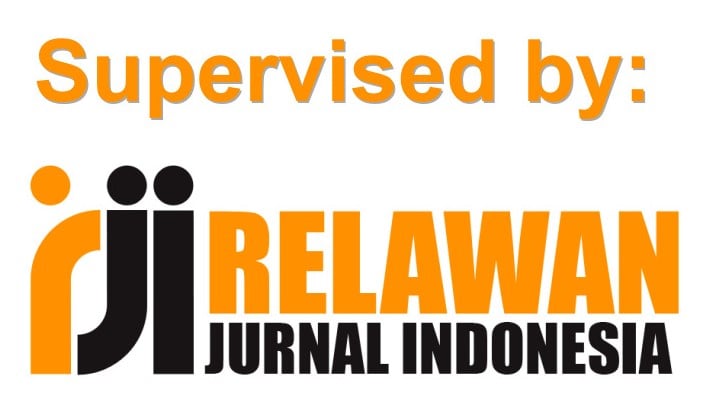Pendidikan Tauhid Dalam Kisah Nabi Ibrahim
DOI:
https://doi.org/10.18592/jsi.v7i2.3259Keywords:
Monotheism Education, Surat al-An'am, Islamic EducationAbstract
The results showed that: 1) Monotheism Education in Surat Al-An'am: 74-83 namely: 1) Monotheism Education Rubūbiyah, which is in verse 75 which explains that Allah SWT has shown signs of the greatness of Allah SWT in the sky and grounded to prophet Ibrahim as so that his soul is directed. Then the prophet Ibrahim (as) discovered the truth of the belief in a Godhead through observation and contemplation about the universe by using his fitrah, and this is following verses 76-78. 2) Education of Uluhiyah Tauhid is in verse 74, which explains that the father and the prophets of Abraham made the idols they made into gods. Moreover, verse 79, that is, the sincerity of the prophet Ibrahim as to surrender, confronts his view of Allah SWT. It does not follow his people to associate Allah by way of worshiping other than Him, such as worshiping the stars, the moon, and the idols that they made themselves.3) Implementation of Tauhid Education in Islamic Education: The faith taught by Islam to humans since childhood is critical. Because the goals of Islamic education itself are in harmony with religious goals: 1) To realize a believer who believes and is devoted to Allah SWT.2) Education in Islam seeks to develop and inculcate monotheistic education to humans as optimal as possible to be able to function as a driving force in daily practice. 3) Development and inculcation of monotheism education can be done with learning activities, namely through various institutions. 4) In the school environment, both elementary, middle, and for the development and planting of monotheism, education is carried out through multiple activities, both at the time of KBM and extracurricular. 5) Outside the school, the development and cultivation of human monotheism education start from the family environmentReferences
Al Faruqi, I. R. 1984. Islamisasi pengetahuan, Terj. A. Mahyuddin, Bandung: Pustaka.
Al Maraghi, A. M. 1992. Terjemahan tafsir Al Maraghi juz VII. Semarang: Toha Putra Semarang.
Al Qarni, A. 2008. Tafsir muyassar. Jakarta: Qisthi Press.
Ali, M. D. 2008. Pendidikan Agama Islam, Jakarta: Raja Grafindo Persada.
Ashshiddiqi, A. M. 2017. Model epistemologi personal dalam keyakinan tauhid Nabi Ibrahim As (Perspektif Psikologi dan Islam), PSYMPATHIC : Jurnal Ilmiah Psikologi, 4 (1).
Ash Shiddieqy, T. M. H. 2000. Tafsir Al Qur’anul Majid An-Nuur Juz 7. Semarang: PT Pustaka Rizki Putra.
Departemen Agama R.I. (2002). Al Qur‟an dan Terjemahnya, Madinah: Lembaga Percetakan Al Quran Raja Fahd.
Arifin, M. 2014. Ilmu pendidikan Islam: Tinjauan teoritis dan praktis berdasarkan pendekatan interdisipliner. Jakarta: PT Bumi Aksara.
Arikunto, S. 2010. Prosedur penelitian: Suatu pendekatan praktek, Jakarta: Rineka Cipta.
Bloor, M. & Wood, F. 2006. Keywords in qualitative methods: A Vocabulary of Research Concepts, New Delhi: SAGE Publications.
Daulay, H. P. 2004. Pendidikan Islam: Dalam sistem pendidikan nasional di Indonesia. Jakarta: Kencana.
Dahlan, A. R. 1997. Kaidah-kaidah penafsiran Al-Qur’an.Bandung : Mizan.
Harahap, Sahrin. 2000. Metodologi studi dan penelitian ilmu-ilmu ushuluddin. Jakarta: PT Raja Grafindo Persada.
Langeveld, M. J. 1976. Paedagogik: Teoritis-Sistematis. Jakarta: IST.
Majid, A. 2014. Pendidikan berbasis ketuhanan: Membangun manusia berkarakter. Bogor: Ghalia Indonesia.
Marimba, A. D. 1989. Pengantar Filsafat Pendidikan Islam. Bandung: PT. Al-Ma’arif.
Nawawi, H. 2012. Metode penelitian bidang sosial. Yogyakarta: Gadjah Mada University Press.
Shihab, M. Q. 1996. Wawasan Al-Quran: Tafsir maudhu’i atas pelbagai persoalan umat. Bandung: Mizan.
Downloads
Published
How to Cite
Issue
Section
License
Authors who publish with this journal agree to the following terms:
- Authors retain copyright and grant the journal right of first publication with the work simultaneously licensed under a Creative Commons Attribution License that allows others to share the work with an acknowledgment of the work's authorship and initial publication in this journal.
- Authors can enter into separate, additional contractual arrangements for the non-exclusive distribution of the journal's published version of the work (e.g., post it to an institutional repository or edit it in a book), with an acknowledgment of its initial publication in this journal.
- Authors are permitted and encouraged to post their work online (e.g., in institutional repositories or on their website) before and during the submission process, as it can lead to productive exchanges, as well as earlier and greater citation of published work (See The Effect of Open Access).





















